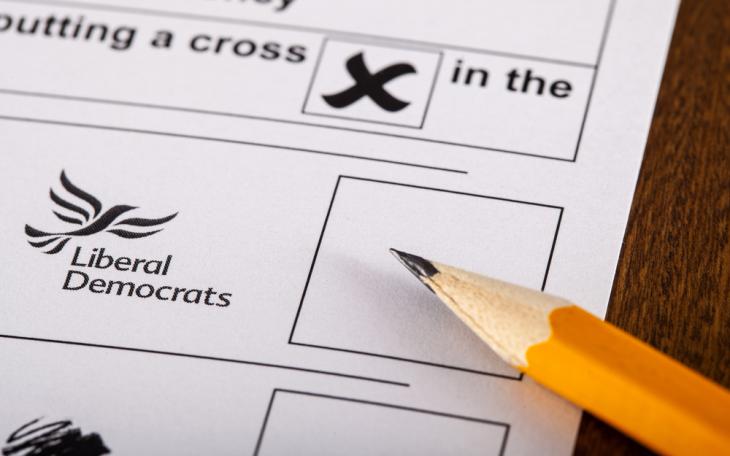The Lib Dem leadership contest and Britain’s new electoral geography

By Gareth Jones, Newgate Public Affairs
August is typically a quiet month in UK politics. This year is obviously an exception, with the government attempting to manage multiple policy issues during this current phase of the pandemic – from public health, resurrecting the economy, addressing exam results and reopening schools. Meanwhile, Brexit trade talks appear to be making little progress, with the increasing prospect of a ‘no deal’ by the end of the transition period.
However, even in a typically quiet August, it would still be unlikely that there would be widespread enthusiasm and interest in the Liberal Democrat leadership contest – a contest which has taken the best part of eight months, largely consisted of just two candidates – Ed Davey and Layla Moran – and concludes this week, with the result announced this Thursday. Even for those with an active interest in UK politics, this contest has seemed largely irrelevant. After all, the Party only has 11 MPs in the House of Commons and its main political objective of the past few years – opposing Brexit – is no longer feasible. So many have questioned whether the leadership of the Lib Dems matters at all.
I would argue it does. The Party has, electorally speaking, been in the doldrums for a while now since its period in coalition government, but has managed to cling on throughout a difficult period and prompt a revival in its local government representation and party membership (which is now estimated at 120,000). There is, arguably, still the need and demand for a liberal centrist party in UK politics and an alternative to the two major parties. The future fortunes of the Lib Dems also raises some interesting questions about Britain’s new electoral geography.
Yesterday, Ed Davey and Layla Moran took part in a televised debate, each setting out their case for why they can revive the Party’s fortunes. In policy terms, there was not much between them – both said they would promote green jobs and introduce a universal basic income, and while both described themselves as pro-European, neither of them have said they would be calling for the UK to rejoin the EU in the near future. It was, however, in their tone where the differences were more apparent. Davey is more associated with the Party's right-wing Orange Book branch and, as a minister in the coalition government, defended the Party’s role in government. Meanwhile, Moran, seen as the more left-wing candidate and has positioned herself to represent a break from the coalition years. In a nutshell, you could say that Davey’s approach is more appealing to Conservative-inclined voters, while Moran’s is better suited to Labour voters.
In terms of prompting a Lib Dem revival, it would appear that Davey’s approach makes more sense. While the last election was another disappointment in terms of seats won, the Party became much more competitive in larger parts of the country – particularly in parts of southern England, affluent suburbs, the home counties and university towns. In what has been described as the "yellow halo" – the Party has seen growing support in south-west London, Surrey to Hampshire as well as Oxfordshire and Cambridgeshire. Many of these seats in this region have traditionally voted Conservative but if the Lib Dems can appeal to more Conservative-inclined voters in these areas, then you can envisage a pathway to the Party’s revival.
Such an approach is by no means guaranteed to succeed and, in many ways, the fortunes of the Lib Dems ultimately depends on the approaches taken by the two main parties. The Conservatives have been focused on building and maintaining its successful electoral coalition of traditional supporters and new supporters in the ‘red wall’ by committing to Brexit, appealing to people’s patriotism and outlining a programme of economic interventionism and ‘levelling up’ in the midlands and north of England. A key question remains as too whether this approach risks losing them support in affluent parts of southern England at the next election which the Lib Dems can exploit. Conversely, the Lib Dems could find themselves even more squeezed by the Conservatives and a Starmer-led Labour Party as country moves beyond Brexit to new issues.
It is arguably way too soon to consider the electoral geography of 2024, but it should be stressed that smaller parties have had a profound impact on our politics over the past decade – for example, think of the role UKIP, the DUP and the Brexit Party have played in shaping out future. A modest Lib Dem revival could have a major impact in years to come.









